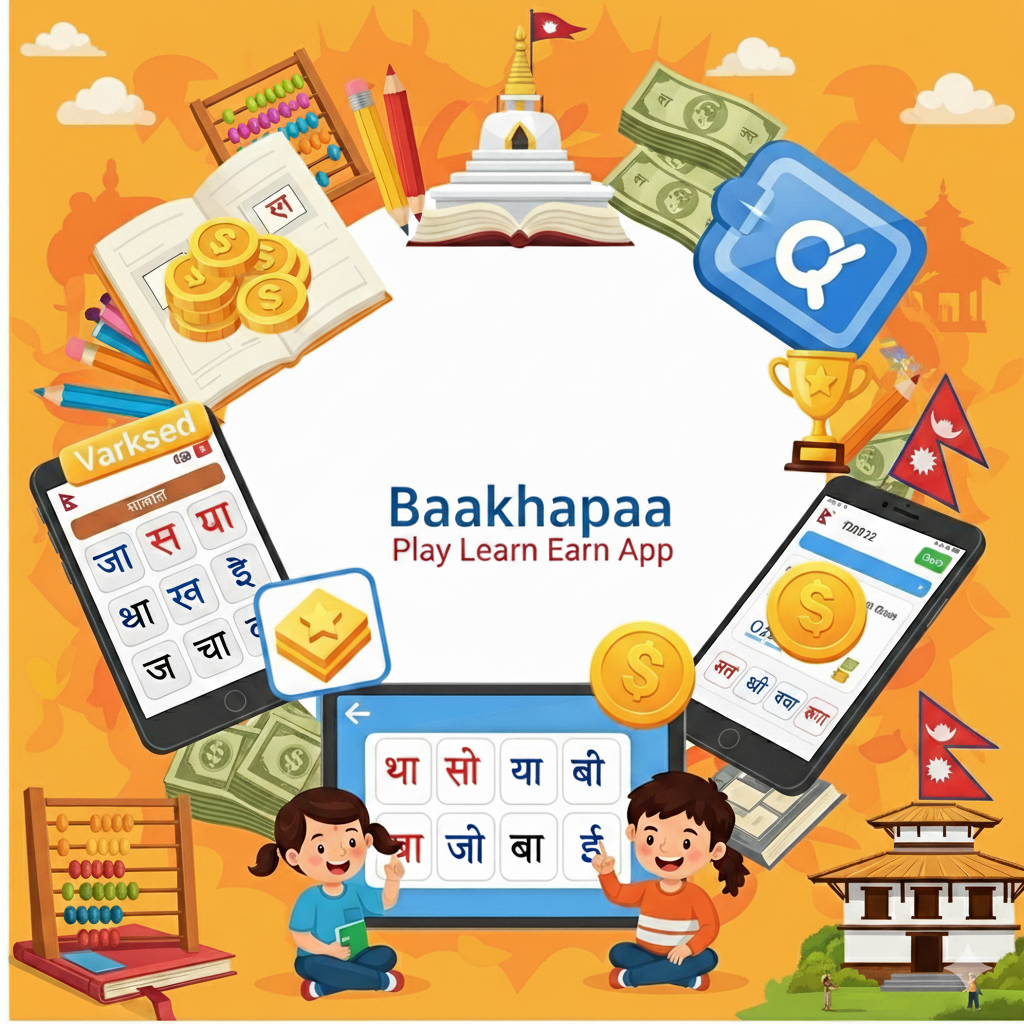Story Time Across Borders: How to Share Nepali Folk Tales & Values with Your Kids Abroad
For Nepali parents raising their children in different corners of the world, a common heartfelt desire is to instill a sense of connection to their rich cultural heritage. One of the most powerful and enjoyable ways to achieve this is through the magic of storytelling. Sharing Nepali folk tales for children is more than just entertainment; it's a vital tool for teaching kids Nepali culture, imparting timeless values, aiding mother tongue learning, and fostering a strong sense of identity, even from afar. This guide offers ideas and resources for cultural education for diaspora children, helping you bridge distances and keep traditions alive.
Why Stories Matter: The Benefits of Cultural Storytelling
Passing down folk tales and cultural narratives offers numerous benefits for children growing up in the diaspora:
- Language Development: Hearing stories in Nepali, even if interspersed with the dominant language of their environment, is crucial for raising bilingual kids abroad. It introduces vocabulary, sentence structures, and the unique cadence of the Nepali language in a natural, engaging way.
- Imparting Values & Life Lessons: Nepali folk tales for children are often rich with moral lessons about honesty, kindness, courage, respect for elders, the importance of community, and the consequences of actions. These stories provide a relatable context for discussing important values.
- Cultural Connection & Identity: Stories are a window into the soul of a culture. They introduce children to Nepali customs, traditions, deities, historical figures (even legendary ones), and a shared understanding of what it means to be Nepali. This is fundamental for connecting kids to roots abroad.
- Fostering Imagination & Creativity: The often fantastical elements and imaginative scenarios in folk tales stimulate a child's creativity and thinking.
- Strengthening Family Bonds: Sharing stories creates precious moments of connection between parents/grandparents and children, building a shared family narrative.
A Treasure Trove of Tales: Finding Age-Appropriate Nepali Stories
Nepal has a rich oral tradition and a wealth of folk tales. Look for:
- Animal Fables: Stories featuring animals often carry simple but profound moral lessons (e.g., tales of clever monkeys, wise elephants, or cunning jackals, similar to Panchatantra tales which have parallels in Nepali folklore).
- Myths and Legends: Stories about gods and goddesses (like Durga, Shiva, Ganesh), heroes, and mythical creatures. These introduce important cultural and religious concepts. For example, the story of Goddess Durga's victory over Mahishasura is central to Dashain.
- Tales of Cleverness and Wit: Stories that celebrate intelligence, problem-solving, and outsmarting adversaries.
- Stories of Everyday Life & Virtue: Narratives that subtly teach about kindness, hospitality, and the importance of community.
Resources for Teaching Nepali Heritage:
- Nepali Children's Stories Online:
- YouTube Channels: Many channels offer animated Nepali folk tales or read-alouds (search for "Nepali folk tales for kids," "Nepali Baal Katha"). Some may have English subtitles, which can be helpful.
- Websites & Digital Libraries: Platforms like "Let's Read Asia" offer a collection of free children's books, including some Nepali traditional folk tales and early readers.
- Books:
- Seek out illustrated Nepali children's storybooks. If you're visiting Nepal, bookstores there are a great resource. Online retailers might also stock them.
- Look for bilingual (Nepali-English) books, which can aid both parent and child, especially if the parent's Nepali literacy isn't strong.
- Publishers like Rato Bangala Kitab are known for quality Nepali children's books.
- Language Learning Apps: Some best apps to learn Nepali (like Ling App, Simply Learn Nepali, Memrise) incorporate cultural notes or stories alongside vocabulary and grammar lessons.
Bringing Stories to Life: Tips for Parents
How you share the stories matters as much as the stories themselves:
- Tell Them Yourself: Even if you're not a professional storyteller, narrating tales in your own voice, perhaps from memory from your own childhood, creates a powerful connection. Use animated voices, gestures, and expressions.
- Interactive Storytelling: Pause and ask questions: "What do you think will happen next?" "How do you think the character felt?" Encourage children to act out parts of the story.
- Create a Ritual: Make story time a regular, cherished part of the day, like at bedtime.
- Use Props or Puppets: Simple props can make stories more engaging for younger children.
- Connect to Real Life & Festivals: Tell specific stories that relate to upcoming Nepali festivals (e.g., stories about Goddess Laxmi during Tihar). Explain how the values in the stories are reflected in your family or community practices.
- Don't Aim for Perfection: Especially if Nepali isn't your dominant language, don't worry about perfect grammar or vocabulary. The effort and connection are what count.
Beyond Books: Multimedia & Modern Resources
In 2025, we have more tools than ever:
- Animated Folk Tales: Many classic tales are available as animations online, which can be very engaging for children.
- Nepali Children's Songs & Rhymes: Music is a fantastic way to learn language and culture.
- Educational Apps with Cultural Content: Look for apps that might incorporate Nepali cultural elements, even if they are primarily language-focused.
The Baakhapaa Connection: Stories for a New Generation
This is where the vision of platforms like the Baakhapaa app becomes incredibly exciting for diaspora parents. Baakhapaa, aiming to be an all-in-one storytelling platform with a "Play, Learn, and Earn" model, could be a treasure trove for cultural education for diaspora children:
- Curated Nepali Content: Imagine a dedicated section within the Baakhapaa app stories for kids, featuring beautifully animated Nepali folk tales, interactive stories, and even user-generated narratives from the Nepali community worldwide.
- Language Immersion through Play: The "Learn" aspect of Baakhapaa could seamlessly integrate language learning with storytelling. Children might learn Nepali vocabulary or phrases through challenges related to the stories they watch or listen to.
- Connecting with Heritage: By making these stories accessible, engaging, and even rewarding (perhaps through points in a Baakhapaa Wallet for completing story-related quizzes or challenges), the platform can help children abroad feel a stronger connection to their Nepali roots and the importance of mother tongue.
- Inspiring Future Storytellers: The "creator" focus of Baakhapaa could even encourage older diaspora children to create and share their own versions or interpretations of Nepali stories, further keeping traditions alive.
Overcoming Challenges
- Language Barrier (for Parents): If you're not fully fluent in Nepali yourself, use bilingual books, stories with subtitles, or learn alongside your child.
- Keeping Engagement: Make it fun! Vary the types of stories and how you present them. Relate them to your child's experiences.
- Finding Quality Resources: It might take some digging, but good resources for teaching Nepali heritage are out there. Connect with other diaspora parents online for recommendations.
Conclusion: The Lasting Gift of Cultural Stories
Sharing Nepali folk tales for children and the values embedded within them is one of the most precious gifts diaspora parents can give. It's an investment in their child's identity, their connection to a rich cultural heritage, and their understanding of the world. In an increasingly globalized 2025, these stories serve as anchors, reminding children where they come from and enriching their lives with the wisdom and beauty of Nepali culture. So, open a book, share a memory, or explore a new app – and let the story time across borders begin!
Please login to leave a comment.


 Rakesh Rajbhat
Rakesh Rajbhat




